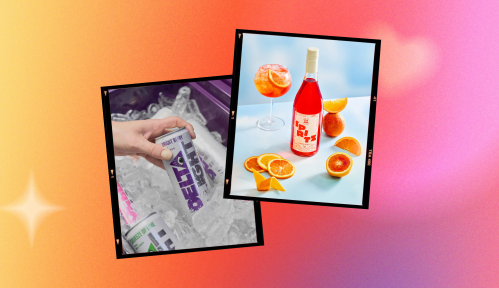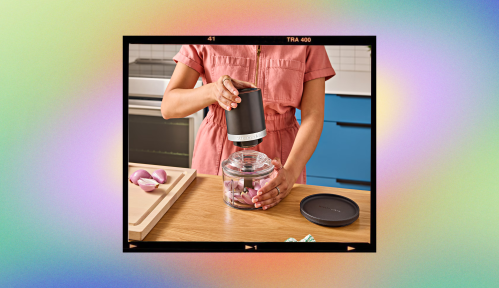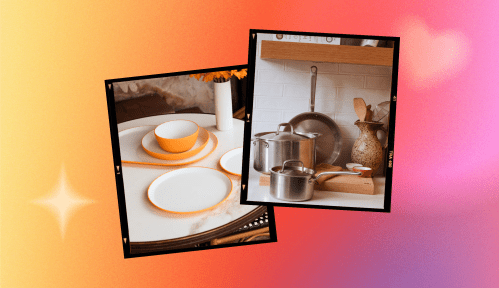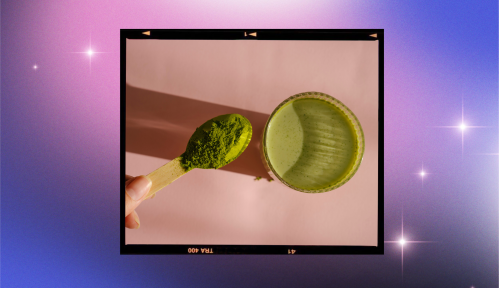Our editors independently select these products. Making a purchase through our links may earn Well+Good a commission
Professional Chefs Are Begging You To Invest in a Good Sharpening Stone To Keep Your Knives in the Best Shape
The best knife is a sharp knife. Here are 10 chef-recommended whetstones to keep your knives sharp for everyday use.

Any aspiring or pro chef needs a few kitchen essentials like a good cookware and a sharp set of knives (or at least three essential ones), emphasis on sharp. Over time, knives inevitably get dull—dull knives are not only annoying, but they can be dangerous. You have to use more pressure to get them to cut, which leaves more room for the knife slipping or you losing control.
Experts in This Article
chef, food stylist, photographer, and health coach
Eitan Bernath is a chef and author with over six million fans across social media for his craveable recipes, food hacks and enthusiastic cooking style.
award-winning chef and owner of Miss Kim in Ann Arbor, MI
Chef Neel Kajale is the Kitchen Test Manager at Haven’s Kitchen.
Ryan Schmidtberger is the executive chef and partner of Hancock St., the American-style neighborhood bistro in the West Village.
celebrity chef, certified nutritionist, and Reiki master
Tobias Dorzon is an Executive Chef and was featured on Season 3 of Guy Fieri’s Tournament of Champions.
William Dissen is an award-winning Executive Chef from Asheville and Charlotte, N.C.
Keeping your knives sharp can be relatively easy, and doesn’t even require leaving your house if you have a knife sharpening stone or whetstone. In fact, you probably need more than one. Executive Chef William Dissen says he uses high quality whetstones in different grits to maintain his knives for precision each and every day. “As they say, ‘A chef is only as sharp as his knife’,” he says.
Best knife sharpening stones at a glance
- Best all around: King Two Sided Sharpening Stone with Base
- Best with bamboo base: Sharp Pebble Premium Whetstone
- Best ceramic: Naniwa 1000-Grit Super Ceramic Water Stone
- Best kit: KERYE Knife Sharpening Stone Kit
- Best with breathable storage: Shapton Whetstone Set
- Best budget: Shan Zu Sharpening Stone
- Best complete set: ShaPu Whetstones Set
- Best with angled base: KEENBEST Sharpening Stone Whetstone
- Best for professionals: Mizuyama Sharpening Stone #1000/#6000
- Best standalone: Nano Hone True Splash and Go Whetstone
What is a knife sharpening stone/whetstone?
Whetstones and knife sharpening stones are the same thing, says Neel Kajale, a chef who has worked at Eleven Madison Park and is now the Kitchen Test Manager at Haven’s Kitchen. “A sharpening stone is a device used to sharpen tools and instruments with a sharp blade,” he says.
There are two main types of sharpening stones:
Oil stones
These stones use oil as a lubricant, which reduces friction during the grinding of the metal during the sharpening process. Oil stones with a finer grit cut metal on the knives at a slow pace, thus it takes longer to sharpen the blade.
Water stones
These stones use water as a lubricant. “Technically any stone can be a water stone,” says Kajale.
Regardless what type of stone you use, Kajale says it’s important not to mix up your lubricants. So if you sharpen using oil as the lubricant, you have to always sharpen with oil, as using water afterward can permanently damage your stone.
It’s also important to note that a honing stick (a handheld rod used for straightening knife blades) is not the same, nor is is it a substitute, for a whetstone. “A honing stick only brings the blade edge back to center, rather than creating a new edge all together,” says chef and culinary personality Eitan Bernath.
Ahead find the best chef-recommended whetstones to keep your knives—and your cooking skills—sharp.
Best knife sharpening stones (or whetstones)

Best all-around: King Two Sided Sharpening Stone with Base — $50.00
Chef Ryan Schmidtberger of Hancock St. in New York says he always recommends getting two stones for sharpening knives, “one in 1,000 grit and a second in either 4,000 or 6,000 grit depending on the style of knife you have.” He says there are a few versions that offer one stone with two sides of grits, such as this Korin one, which can be used at home or in a restaurant.
This two-sided King sharpening stone is also a favorite of Ji Hye Kim, the award-winning chef/owner of Miss Kim in Ann Arbor, MI. “The stone is high-quality enough for professionals, but its two sides and sturdy base make it a great efficient option for home cooks and novices as well. It’s also relatively affordable while still being high quality,” she says.
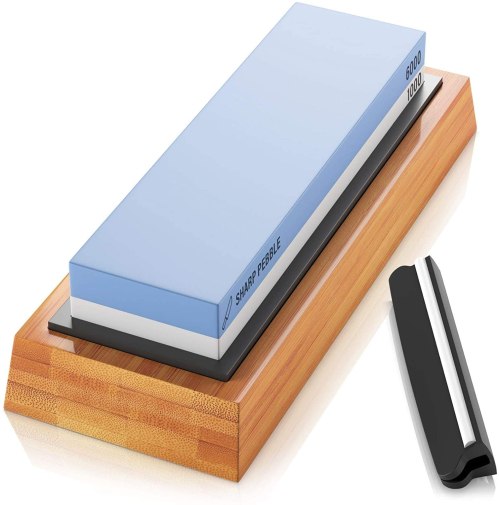
Best with bamboo base: Sharp Pebble Premium Whetstone — $40.00
This two-sided stone is a a recommendation from Kajale. The stone is made out of aluminum oxide and has a 1,000-grit side for sharpening and a 6,000-grit side for honing. It also comes with a non-slip silicone holder, a bamboo base, and an angle guide to help you sharpen at the correct angle.
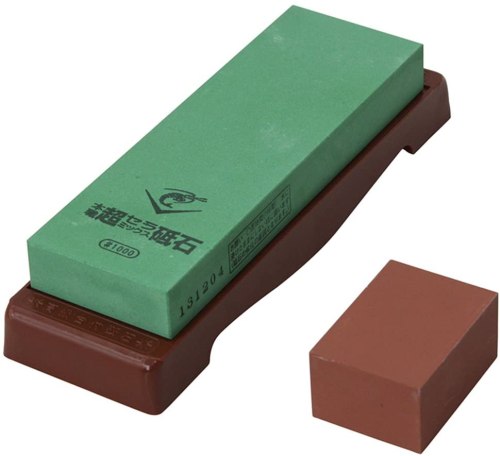
Best ceramic: Naniwa 1000-Grit Super Ceramic Water Stone — $69.00
Bernath recommends this ceramic water stone, made by Japanese company Naniwa. It’s 1,000-grit and splash and go—add some water and you’re ready to get a razor sharp edge. It also comes with a stand to help prevent the stone from sliding around, and a dressing stone to keep the sharpening stone in tip top shape. He mentions that it’s also important to make sure you have the right angle for the knife you’re sharpening (for example, Western vs. Japanese knives are sharpened at different angles). For a little extra help, Bernath recommends using these wedges.
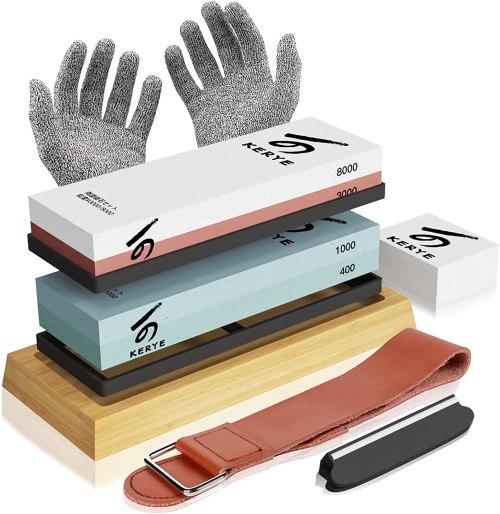
Best kit: KERYE Knife Sharpening Stone Kit — $40.00
Carla Contreras, a chef who also teaches basic knife skills, sharpening and care in her online cooking school, Cook+Chop, suggests this set, which comes with two Japanese whetstones. Each stone is double-sided (400/1,000 and 300/800), and the set also includes a bamboo base to hold the whetstones in place, a leather strop to polish the knife, an angle guide, a flattening stone to keep your whetstones level, and a pair of cut-resistant gloves so you can sharpen without worrying about any unwanted injuries.
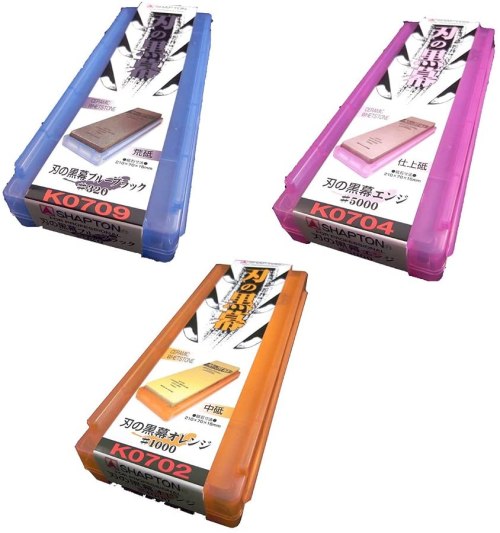
Best with breathable storage: Shapton Whetstone Set — $126.00
This multi-stone set, another option from Kajale, comes with three ceramic whetstones: rough grit (#320), medium grit (#1,000), and fine grit (#5,000). Each stone has a ventilated plastic box that can be used as a stand and also provide some breathable storage, and the boxes are color-coded so you can easily grab the right stone when you need it.
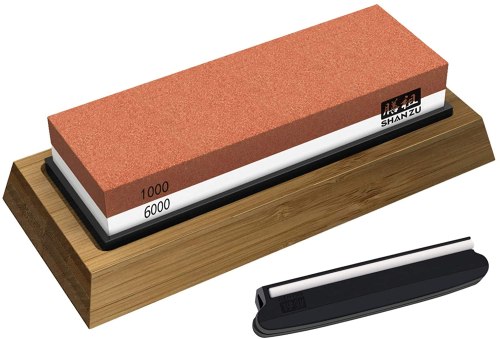
Best budget: Shan Zu Sharpening Stone — $25.00

Best complete set: ShaPu Whetstones Set — $120.00
For anyone who likes to have options, this pick from Kajale gives you four whetstones with a total of eight grits (240/800, 600/1,500, 1,000/3,000, and 5,000/10,000) to make sure all your sharpening needs are covered. The whetstones are made with aluminum oxide, and also included is an acacia wood base, flattening stone, angle guide, and carrying case to keep everything organized when not in use.

Best with angled base: KEENBEST Sharpening Stone Whetstone — $52.00
Traditionally, Eastern knives are sharpened on a whetstone with (approximately) a 15-degree angle and take more care, says Contreras. This set comes with two double-sided whetstones (400/1,000 and 300/800) and a stand with a built-in 15-degree angle. You can also use it for other knives too — you’ll also get a basic non-slip rubber base and angle guide, as well as a leather strop, polishing compound, a flattening stone, and an extra sand stone.
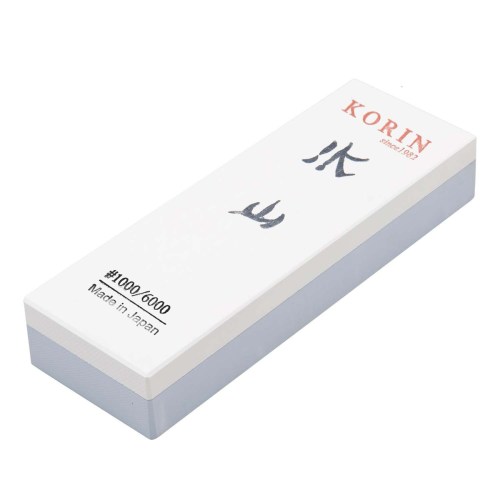
Best for professionals: Mizuyama Sharpening Stone #1000/#6000 — $76.00
Dissen says he looks for high-quality Japanese-style ceramic whetstones for sharpening his knives, and always has an 800 Grit, 1,000 grit, 4,000 grit, 8,000 grit, and a 10,000 grit stone, as well as a stone fixer on hand to keep the stones flat to ensure even knife sharpening. He says Mizuyama is one of his favorite brands. Mizuyama stones were developed by a natural sharpening stone specialist and absorb water to make the sharpening process easier. This #1000/6000 grit stone can be used both as sharpener and a finishing stone.
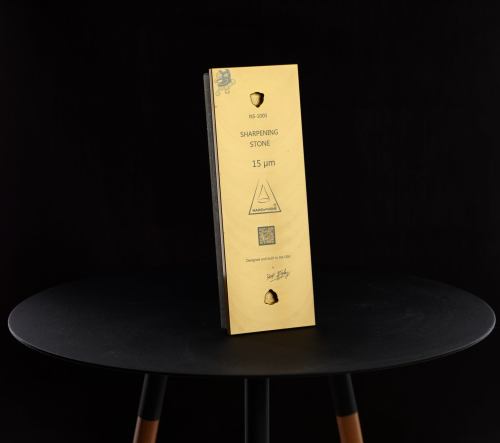
Best standalone: Nano Hone True Splash and Go Whetstone — $85.00
Bernath also recommends this splash-and-go whetstone, made of a non-porous ceramic. There are six different options, ranging from 200-1,000 grit. The stones have a reinforced aluminum backing plate but don’t come with a stand. You can also order a stone stage, designed to fit the backing plates, to secure your whetstone in place while you sharpen.
What to look for in a knife sharpening stone/whetstone
Grit
Whetstones are measured in grit levels, which is the coarseness of the stone. Serena Poon, a celebrity chef, nutritionist, and Reiki master explains: “Coarse whetstones, which are generally categorized as up to about 1000-grit are useful for repairing damaged knives. Medium whetstones have about a 1,000-3,000-grit and are used to sharpen dull knives—this is likely the coarseness that you would use most at home. Finishing stones, or anything above 3,000-grit are used to polish and refine the blade.” Kajale recommends having a set that includes 400,1,000, 3,000, and 6,000-grit so you have a range you can use whether you’re setting or polishing your blade.
Material
The material of your whetstone is a matter of personal preference, says Poon. Whetstones can be made from natural stone or synthetic materials like ceramic, aluminum oxide, diamond, and glass. The material will also determine the hardness or softness of the stone. For example, silicon carbine is the hardest material, while aluminum oxide is softer, says Kajale. He says ideally you want a balance so the hardness of the stone helps grind the metal off the knife, but softness of the stone ensures allows the stone to wear away over time to expose more surface area that has sharpening/polishing properties.
Size
It’s important to have the right width and length, says Tobias Dorzon, Executive Chef and contestant on Season 3 of Guy Fieri’s Tournament of Champions. “If you get a small stone, it prevents you from sharpening bigger knives and can cause injuries,” he says. Kajale advises that the length of the stone should be directly proportional to the length of the blade of the knife, so when you’re sharpening an 8″ Chef’s knife, the stone should be at least 8″.
Quality
Regardless of the grit or material, make sure you’re buying a high quality product. “A whetstone can be a longtime purchase if you choose a high quality option and take good care of it. You might want to invest a little more in something that will last,” says Poon.
Want to be the first to hear about the latest (and greatest) SHOP product drops, custom collections, discounts, and more? Sign up to have the intel delivered straight to your inbox.
Sign up for the Well+Good SHOP Newsletter
Get exclusive deals on wellness, beauty, fitness, and food products that have been hand-picked by our editors.
Got it, you've been added to our email list.
